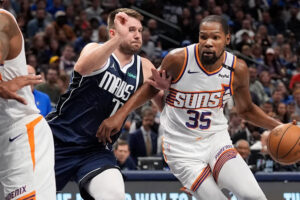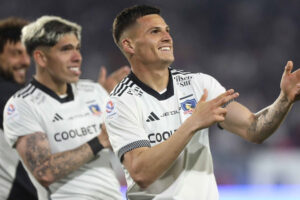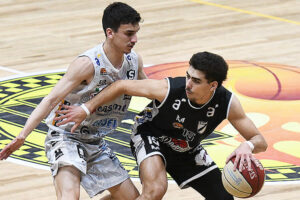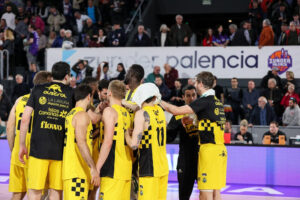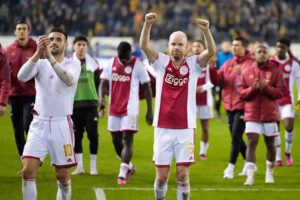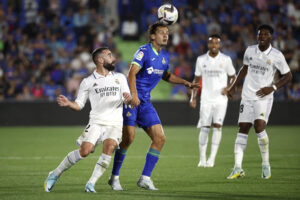Bridal patience: fifty-one years the Copa América waited for the appearance of Venezuela. Since it began in 1916, the binding tournament did not host the selected vinotinto, the soccer Tom Thumb from South America. Finally, in Uruguay 1967 the tenth brother of the South American family joined. The number five took decades to impose itself and develop in that blessed land of the Caribbean. He did not arouse the same passion as in the neighborhood. Baseball, basketball, boxing were always above in Bolívar’s homeland. Venezuela did not have the fans nor, above all, the tradition of clubs from other countries, they were rather licenses that presented teams for a while and then disappeared.
—There was a great enthusiasm for foreign football, the big international teams went to Caracas, where the Little World Cup was played. When the World Cups began to be shown on TV, the country was paralyzed for the whole month. As the local team did not participate – and they had no chance to do so – they watched all the games and identified with the other teams, explains Edgardo Broner, a brilliant Argentine-Venezuelan journalist who followed Vinotinto everywhere and accompanied its growth.
(You may be interested: James’ goal! See the Colombian’s goal against Manchester United)
And in a way he entered that 1967 Cup by chance because it was just the only edition in history that was not done by invitation, he was forced to play a previous tie. Chile-Colombia, Paraguay-Ecuador and Venezuela-Peru had to face each other to determine who entered and who did not. They were clashes to match and revenge. Chile and Paraguay made the cut on the court, winning, but Venezuela achieved a place due to the retirement of Peru, which gave up participating. Luckily, it would have been difficult for him to beat the Peruvians, who were going through a stellar moment of their football, with many good players, as they would demonstrate a couple of years later by brilliantly qualifying for the World Cup in Mexico ’70.
The new Venezuelan representation took its cup debut seriously. Rafael Franco, an Argentine coach considered a master in the Venezuelan soccer environment, traveled to the front of the team. Professor Andrés Parodi, renowned Chilean physical trainer and coach, was in charge of the athletic part. The delegation arrived in Obdulio Varela’s country dressed in a suit, wearing a red checked suit with black stripes, black pants, a white shirt and a tie. They drew attention upon their arrival at the bus terminal.
—We got off to a bad start: when they saw us in a suit and tie, they asked us if we were musicians. Franco was approached by some journalists and he said we were going to learn. They answered him that he was going to school for that.
(Further: Nairo is going to Europe; his dad, hospitalized for coronavirus)
The funny evocation comes from Rafa Santana, a Canary from Las Palmas who arrived in Caracas at the age of twelve and is as Venezuelan as the joropo. Rafa was the revelation of the team in the championship, as he scored three goals, one against Argentina in the opening, another against Bolivia and finally against Paraguay.
The suits generated more than one occurrence. Professor Parodi tells it in his book “My thirty years in Venezuelan football.”
—Our dress uniform set us apart from the other delegations. When we weren’t playing, it was an obligation to go to the Centenario stadium to watch the other games with that gala outfit. One of those nights we were in the stands watching the match between Bolivia and Paraguay and the Argentines arrived, who also came to watch the games, when Roma, goalkeeper for the Albiceleste team, upon seeing us together, looked at us attentively and asked us sarcastically: ” What orchestra are you…? ” We wanted to answer him rudely, but we preferred to smile, although we had a defender, a Uruguayan girl who was very close to us replied: “Don’t be fat, Argentine …” of this young woman.
Rafa Santana also had his little revenge with Roma: he scored the goal of honor in the 5 to 1 that Argentina gave them.
-It was my first goal in the tournament and the first for Venezuela in a Copa América. Rome told his defenses everything, he did not like anything that a Venezuelan did it to him. I celebrated it as if we had won a World Cup, because I also hit him with the one to walk, the left foot. It was a football euphoria, without the intensity of the millions, money did not exist for us, there were no prizes or travel expenses, only the necessary food and a bed. But the spark of the Venezuelan in the concentrations is something incredible. Not letting you sleep, changing the toothpaste, leaving you out… In all that we were the champions, nobody beat us in humor. Until we got to the court …
The outfit continued to generate episodes for the debutants. In the match against Chile, because the uniforms of both teams were similar – Chile red, Venezuela borravino – a draw was made to decide who would change colors. Venezuela lost and they found they had no alternative shirts. It was an emergency; Someone found a set of button-down shirts (they were used a lot in the River Plate teams before). They were from Peñarol, who played local in their Centennial matches and they wore those. “With you … the Vinotinto …!” But the beginners came out sporting the black and gold colors of the mirasols.
After three defeats (against Chile, Uruguay and Argentina), Venezuela achieved its first victory in the competition: 3-0 to Bolivia.
“What I regret is that we had to wait forty years to win another match, I find it shameful,” says Santana, who would lead the team in the 1987 and 1995 cups.
(Read also: Did James get injured again? This is Carlo Ancelotti’s explanation)
In the middle there was a long saga of humiliating defeats, like the one from 11 to 0 that Argentina gave him, which also lined up a B team. “Venezuelan football is a bad joke,” said João Saldanha with his customary crudeness (“Juan without Fear ”), famous journalist and coach who put together the Brazilian team that would later become world champion in Mexico ’70 under Mario Zagallo. Scracht, with Saldanha on the bench, had had to face Vinotinto in the 1969 Eliminatory and defeated it 5-0 in Caracas and 6-0 in Rio.
“Venezuelan soccer was like a submarine, nobody saw it,” says Richard Páez, the doctor who achieved the cure. He was part of that 0-11, but then he turned the tables by being a technician: in 2001, the always beaten Vinotinto took a phenomenal turn, as if Popeye opened a can of spinach and swallowed it in one go: he inflated his biceps and won four consecutive matches in the Qualifiers. He knocked down Uruguay, Chile, Peru and Paraguay in series. They had never dreamed of four wins in a row. She was already another Vinotinto, less innocent, more mature and hard-working, with an indisputable evolution, which she shows today, when she can beat anyone.
Venezuela is a story with a happy ending: now it is also a land of soccer, not just baseball. We saw the photo that synthesizes all that evolution in the final of the Libertadores: it is Yeferson Soteldo, a short (1.58) and tall football player who wears the 10 of Santos. Pelé’s sacred mantle is now worn by a Venezuelan.
Last tango
Jorge BarrazaFor the time
@JorgeBarrazaOK


